Review: UpTone JS-2 Linear Power Supply (Sort of)
The review for the Uptone JS-2 has been delayed multiple times due to issues beyond my control. A series of unfortunate events that included my primary DAC developing a fault at the worst possible time. The fault turned out to be a dry joint in the high voltage transformer. Kudos to the Don for the diagnosis and fix!
Unfortunately this long run of bad luck means my perspective on things will be cloudier than usual - any positives I write in this post will be over amplified, likewise the negatives under amplified. The JS-2 was also modified during the system down time. I have spent more time listening to the modified JS-2, and way less time with the stock JS-2. Most importantly, I havn't auditioned all the PSU that's available out there - the only PSUs I have tried are an ebay 12V5A SMPS, the HDPlex and this Uptone. Therefore please make sure you take all these into consideration when reading this article.
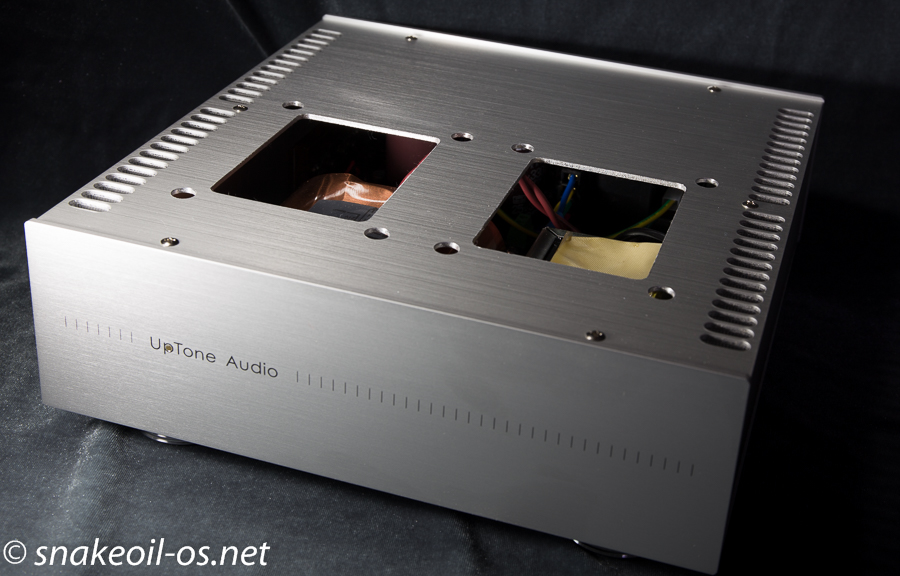
First up I'd like to show what modifications are made. Local DIY guru Don cut up the top plate of the JS-2 with his trusty CNC machine:
Here is different angle with the cut outs up close. The cuts are not as clean as Don's previous CNC projects, but this is immaterial in my opinion because the rough edges will be covered by the Hashimotos and be hidden from view anyway. You can see my lazy trait here as I did not bother to clean up the edges :P. Just made sure to remove all the burrs so that no stray aluminium will fall accidentally and short circuit something.
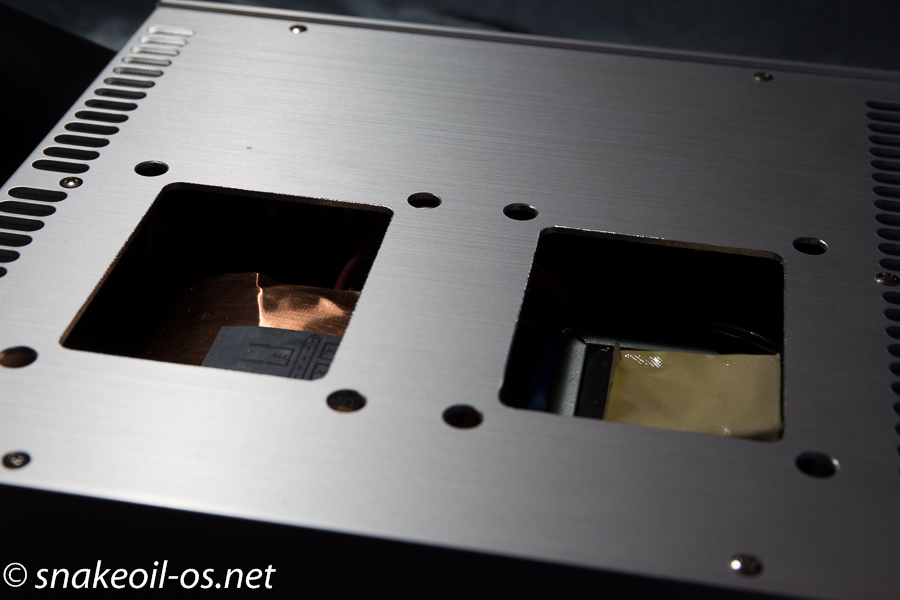
The modification effectively is to gut the JS-2 - remove the R-core, choke and the 2 capacitors (all expensive stuffs), and replace them with even more expensive parts - Hashimotos and Jensens.[adsense:][pagebreak]
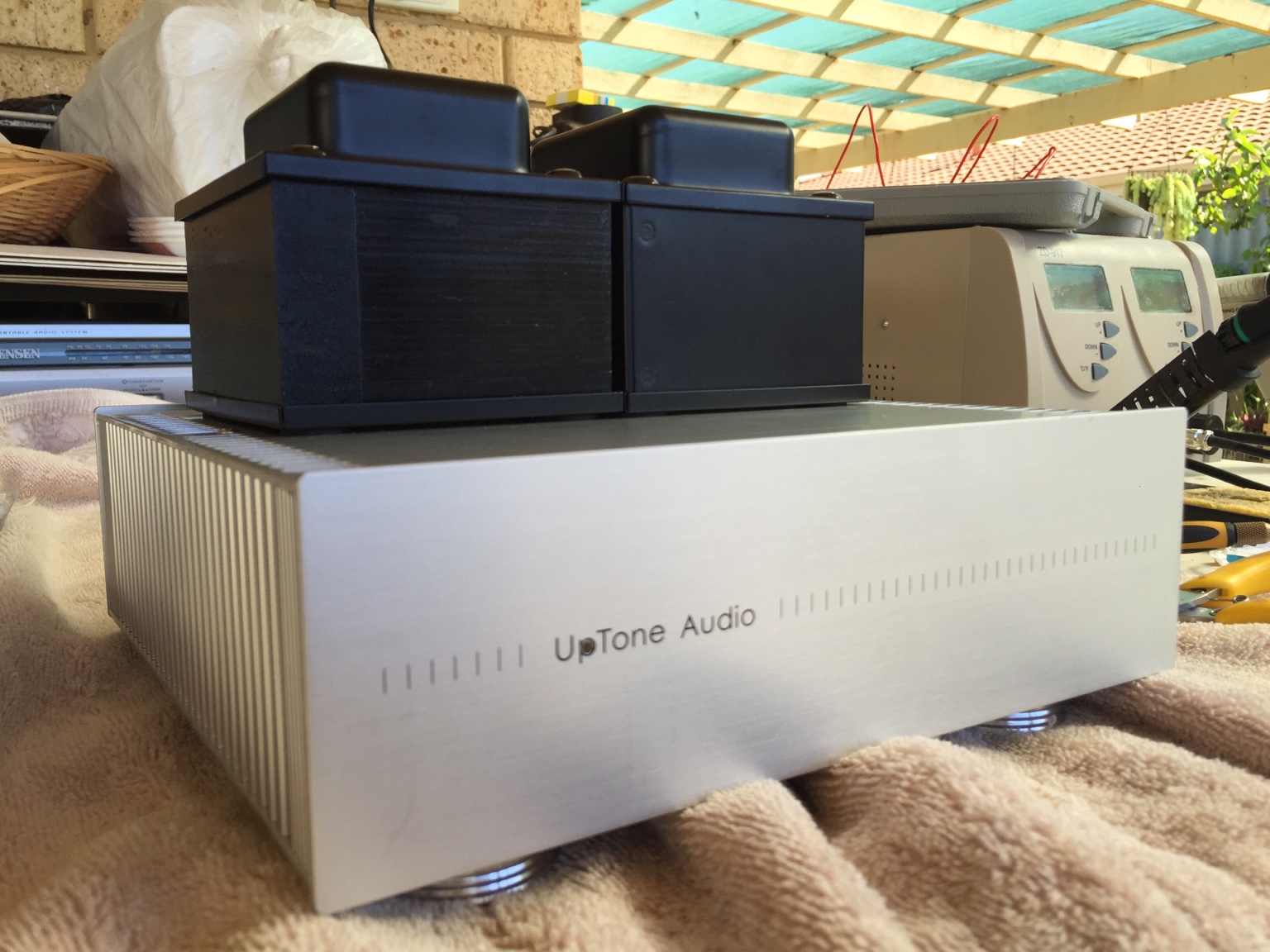
Here it is as modified by the PSU guru Chanh (Pictures courtesy chanh). He rotated the top plate 180 degrees so the Hashimoto transformer/choke now sits at the back:
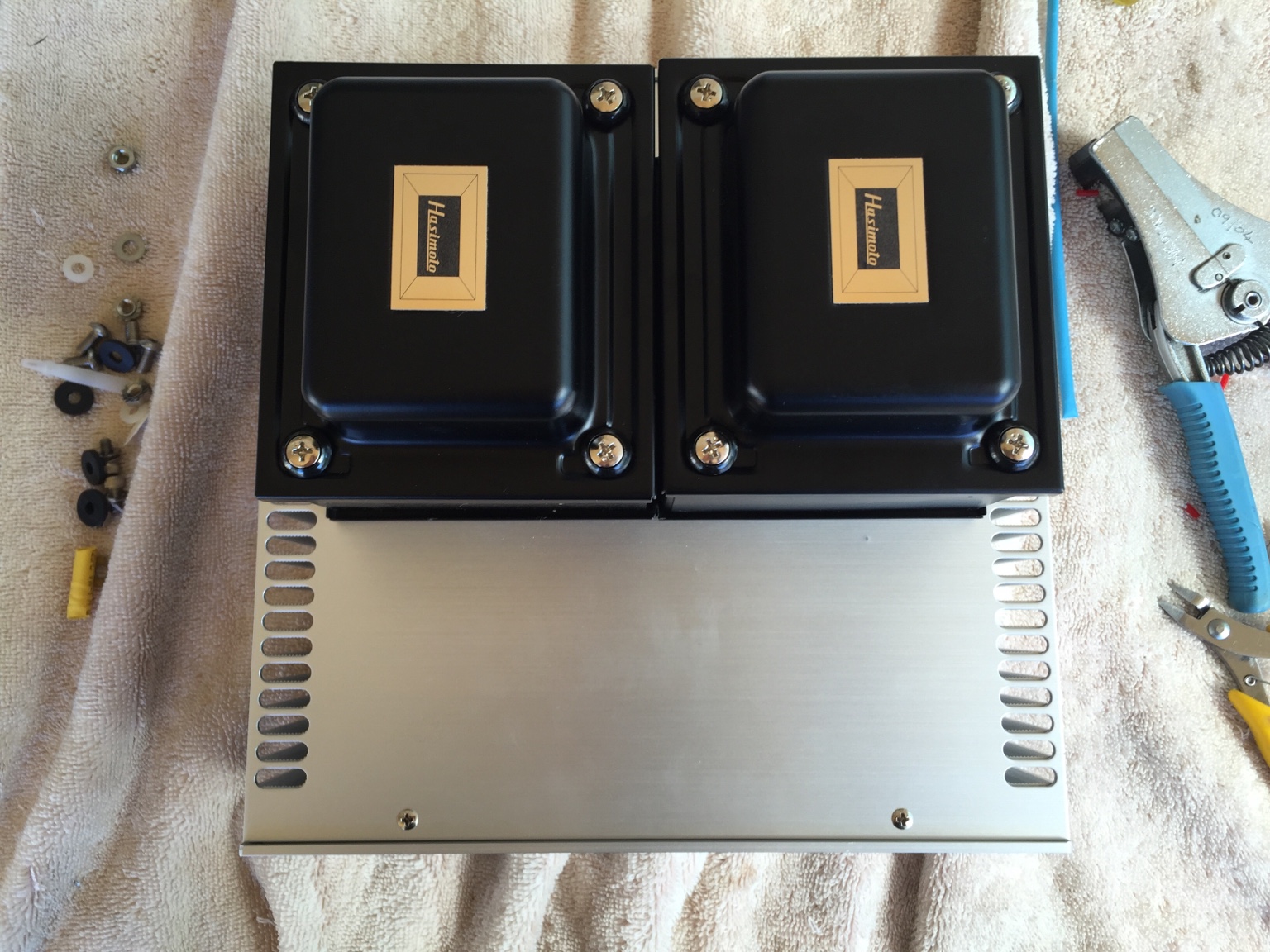
And the top view.
So how does it sound? Let's start with the stock JS-2 first - this uptone product is an impressive power supply, period! Compared to the HDPlex 100W Linear PSU, the JS-2 improves in terms of image width/height/depth, even for poor recordings.
An example would be albums from Glee (A TV show), the first track of volume 7, titled "You Can't Stop The Beat" begins with a female vocal solo (Lea Michele?).
Using the HDPlex linear PSU, this track sounds ok. but only for the first 50 seconds or so. The point where the solo ends, hell literally begins!
The moment the song picked up the pace, everything just seem to be meshed up and turned into noise. What followed after the vocal solo cannot be described properly as they are mostly incomprehensible.
Singing at high speed and articulating words clearly is a skill these Glee singers/actors do not have. The quality of the recording certainly did not help. I kept this song in my playlist because ironically - I can stop the beat!
Powered by the JS-2, metaphorically it is almost like unravelling a crushed up piece of paper from the bin. The creases and wrinkles are still there, only less messy. Never bothered to listen to this track much before (only like the solo introduction), but with the JS-2, because of the expanded soundstage, the music is actually pretty enjoyable. For the first time I realised there is a male backup vocal in this track. I am thinking the backup vocal is always there, before it was never interesting enough for me to actually pay attention to notice it.
I did listen to a fair few other tracks in my playlist, but the above Glee track is something that leaves the biggest impression before the KillerDAC gave up the ghost. Overall the stock JS-2 is pretty decent, for me personally this unit t is certainly better than HDPlex.
Trying to quantify how much better is subjective - like saying how long is a piece of string, or how big that fish I caught actually is many moons ago. The Uptone is simply better, good enough for me to justify it's asking price. But this is just my opinion only, and your mileage definitely will vary. At the end of the day, the difference between the two may well not be as big as I make it out to be.
The leap in sound quality only comes after the additional medications.
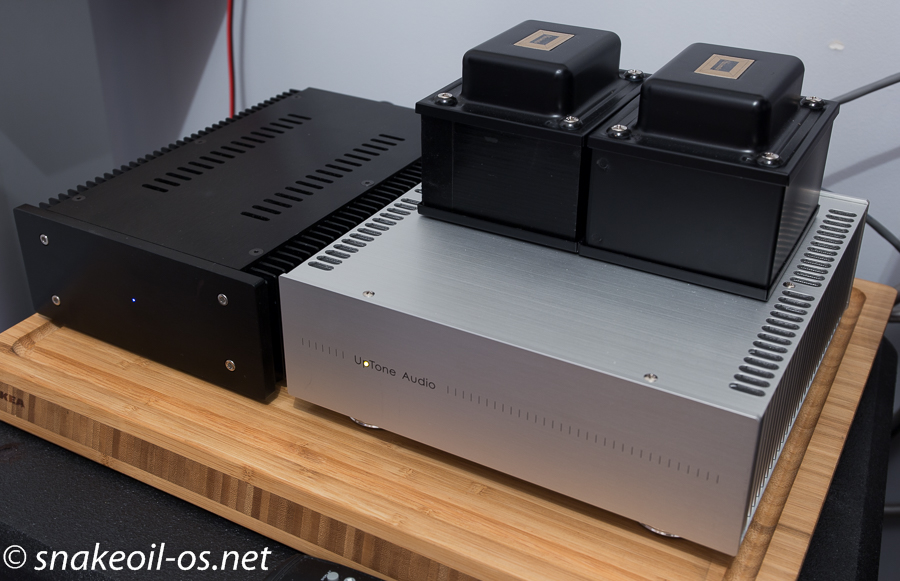
So this is the JS-2 in situ in my setup, now to me this look bad ass!
Yes, I'm going to say it, the modified JS2 makes the HDPlex looks like a toy, HDPlex just cannot sport the Hashimoto look. The biggest impact this medication brought to the table is the change of my perception when it comes to the noise level in my setup. Uncanny because the DAC I'm using is not the quietest piece of equipment out there (it's a DIY tube NOS and it's noisy!).
I'm not bothered by this noise from the DAC is something my brain can always tune out when music is playing. But there is another noise, something extra you think you can hear but can't really put a finger on - some audiophiles refer to this noise as "digital hash". Some people like it, other's don't. For me this digital noise is just one of those "things you don't even know it's there until you realised it's no longer there".
Sounds confusing? Whatever it is, it's certainly important enough for people to spend decades arguing about it (digital vs analogue debate). Not aware if anybody really have a firm grim of what this "noise" actually is, but whatever the artefact, for me it is less noticeable with the modified JS-2.
The sound stage has a much "darker background" because of this, almost as if the "noise" has blended more into nothingness. And if I want to stir the hornet's nest, almost analogue like!
All this from a super expensive power supply and a super expensive Hashimotos, who knew?
This dark background to me is key to what makes this modified JS-2 such a pleasure to listen to. A certain aspect often described with the stock JS-2 is how fast the music is. For me the perception of speed and dynamics is even better after modification.
One example of speed would be Valentina Lisitsa (Live at the Royal Albert Hall). With Lisita, the third track (Liszt. La Campanella, S.141 No.3) is a stand out.
The 4+ minute track is a real pleasure to listen to. The fast pace of this piece of music really gives the whole experience a complex multi-layer effect (like there is another piece of music hidden within the music you're actually listening to). Especially love how the modified JS-2 deal with the final parts of the recording, a good test of dynamics. Not just about how loud it is, it's the beauty of a crescendo.
The piano is rich and often times hypnotic, the occasional background noise from the audience (e.g. there are heaps of people coughing) distracts you and pulls you away from the music, and then you're drawn back in to the music again And the modified JS-2 did not disappoint here. The occasional harshness I can get from HDPlex is no longer apparent, from the loudest notes to the softest ones, from fastest to slowest, everything just feels right. A master performance from Ms Lisitsa. A big deal for me as I'm not a fan of classical music at all.
Adam Raffety (Gratitude) is another highlight. Not entirely confident I can reliably discern the timbre of the guitar from the HDPlex versus the JS-2, but I'm thinking there is a difference, and the JS-2 has the better timbre of the two.
Sadly, my system may have lost a tad in clarity. Unfortunately at this stage I can't really tell if this lack of clarity is caused by JS-2 or not because I did have the KillerDAC fixed recently. This album is probably mic'ed up close, Adam's enthusiasm shows up often when he plays. And with this album I suddenly lost the connection with him, his breathings while still audible at time sounds so distant.
And this made me second guess myself, Lisitsa live at the Royal Albert Hall, were the background noise less noticeable compared to what I remembered before? I think it did, something is different, I can't pin point what it is.
Switching between the two PSUs are inconclusive, changing the rectifier and output valves didn't matter much either. The same disconnect is still there. While not really noticeable with Lisitsa, Adam's appeared to be alot fuzzier now. Perhaps the much rawer and closer recording of the Gratitude album perhaps makes the difference here. But I don't really know.
So the question is, did the system loose the ability to highlight micro details? Is there a difference between clarity and resolution? While I do reckon my system is a tad more fuzzy compared to before, resolving ability did not seem to be impacted as much.
In this Chinese album (溫文爾雅-鑽石男聲篇(紫銀合金AQCD)), the 7th track (猜不透 by 鐘明秋). About 30 seconds into the song, I managed to notice a new detail - there is a beeping device at that time stamp. You can hear two regular beeps, and the singer comes in on the third beat.
Like a metronome.
This is the first time I've heard it. The human breath don't sound as real to me now, but yet it still give me something new. That confused me, a lot. Especially when the overall digital noise is diminished. On the surface, it may well be that I have lost something, and gained something too.
For now I'm just going to not focus too much on the micro details and just enjoy the music. In terms of timbre the modified JS-2 is the best I have heard yet.
So in summary, here's some quick pros and cons of the stock JS-2, and the modified JS-2.
Pros of JS-2
- Two rails, with variable output (5, 7, 9 and 12 V).
- Decent sound quality
- Soft non-blinding LED light (and it's not white or blue)
- Comes with a shielded power cord
- Very good imaging and expansive sound stage.
Cons of JS-2
- Very soft aluminium. Makes the product looks cheap given the price point of the product
- Finishing not as well as I would like, screws can be seen exposed on the radiator fins. Too industrial.
Pros of Modified JS-2
- Makes stock JS-2 sound digital in comparison
- Very dark background and natural decay of harmonics
- Remove digital hash for me, allowing me to better focus on the music
- This is now my current reference for CA power supply
Cons of Modified JS-2
- Expensive mod - I'm effectively throwing half the JS-2 away
- Seemed to have lost something (Could be KDac issue, still trying to pin point cause)
- Heavy
For me personally this is a no brainer, buy a JS-2 and modify it. For the non-DIY'er, perhaps ask Uptone to release a model with the Hashimotos (and you don't void your warranty in the process). The makers behind JS-2 did almost everything right, the Hashimotos are simply icing on the cake.
Hashimoto Information:
For those interested, the Hashimotos are:
| Model No. | Type | Specifications |
|---|---|---|
| H-2329 | Transformer | 22 V @ 10 A |
| H-2330 | Choke | 150 MH, resistance < 2 Ohms |
Available from Mr Isao Asakura In the USA by contacting: [email protected]
The usual common sense disclaimer applies. Modifying the JS-2 will void the warranty and you can do very serious damage to the JS-2 and your equipment if you do not know what you're doing. Do this at your own risk, and Snakeoil OS is not responsible for any damage caused by your mistake.
Equipment used for review:
- KillerDAC (TDA1541 NOS)
- AudioGD-GD (normal USB cable from PC and normal RJ45 cable to KillerDAC in I2S mode)
- Lenehan ML-1 Ultras + Tune Stands Mk 1 + Toppers
- Marantz SC-11S1 pre amp
- Marantz SM-11S1 power amp
- Kimber SilverStreak XLR (pre amp to power amp)
- Achtung RCA (from KillerDAC to pre amp)
- Lenehan Ribbontek Speaker Cables
- ClearAudio Diamond Power line power cables
- PSAudio P5
- Compuater
- Jetway NF9c 2600
- 64 GB CFast running Snakeoil OS v0.1.3-pre-release, using Squeezelite only mode (LMS installed on another server)
- PPA USB card (PCI-e)
- Intel NIC (PCI-e)
- Kurouto Shikou (玄人誌向) noise filter (PCI-e)
- mini PCI-e to 3 PCI-e 1x bridge
- Squeezlite 1.6.4-test (music served from NAS)
[Update 24 Jan 2017]
After more than 6 months with Jensens capacitors inside the JS-2, now I'm back to the stock caps but with less capacitance. With about six months of listening experience, it's fair to say I do not like what the Jensens is doing. For more info please read the forum post here: forums.


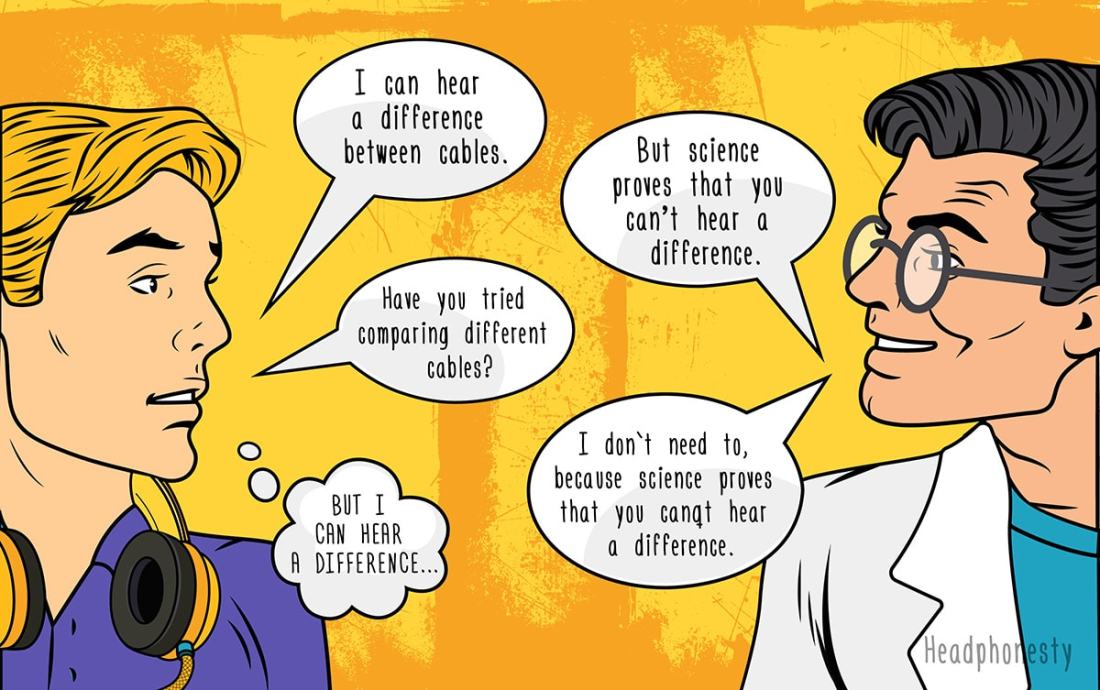
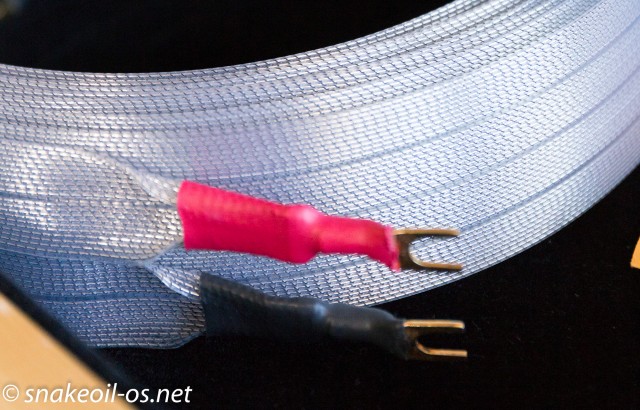
Comments
Hi, great review! Can you…
Hi, great review! Can you provide some photos of your music PC? And can you write more details about Kurouto Shikou (玄人誌向) noise filter (PCI-e)
I didnt find any useful information in google and ive never heard about this filter! Thanks.
I am keeping a logbook of my…
In reply to Hi, great review! Can you… by Cooler (not verified)
I am keeping a logbook of my current PC seutp here: Link. Not always up to date, but at least it’d give you a general idea.
As for the Kurouto Shikou card, cannot find any specs for it now. This card is probably around 10 years old now, purchased from one of those electronics shop (I think it’s Yodobashi) in Japan. Mainly used to filter noise generated by video cards, I do find it work pretty well in a PC. But have also removed it from my current setup because I’m using a smaller case now and can only use two slots (instead of 3). You still can buy similar products in e-bay made by Elfidility. The Elfidility have more caps but I am not sure if they are as effective (Personally I don’t think they are but YMMV).
Add new comment